https://www.youtube.com/watch?v=e_p0GfC9uiQ
How To Draw Noses - Form, Placement, and Artist Study

This video is all about drawing noses .
We go into some basic head construction and talk about how to fit the nose on the face accurately from different angles .
Then a brief overview of the forms of the nose .
Then we look at how the nose reacts under different lighting schemes .
And most importantly , we take a look at some of the best artists in the business and pick up some of their techniques for how to define noses in effective simple ways that you can try yourself .
If you enjoy this video , please be sure to hit light , you can subscribe and share with your friends if you have an artist that draws noses in a way that you really like .
Be sure to comment below and let us all know .
Also be sure to check out our Monday night draw season one sketch book .
It's up on Kickstarter right now .
It covers sketches from the whole first year of our live stream with a whole range of different characters .
All drawn live in a high quality 52 page hardcover book .
Thank you so much for your support .
All right , let's get on with the video before we go ahead and draw some detail , the nose anatomy .
I wanna show a few examples of how we can place it properly on a face .
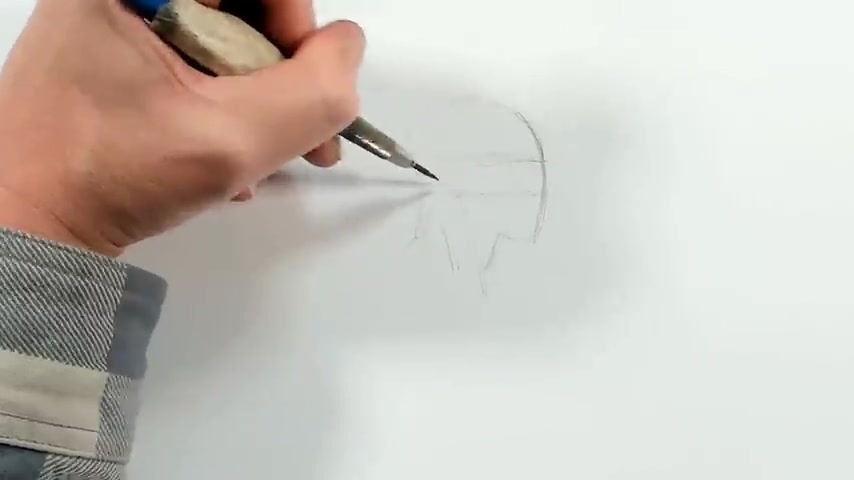
And so I've got my head drawn from the side here is a line for my brow .
This will be a line for my nose and this will be a line for my chin and my forehead here , I'll lighten that down so it doesn't get in our way and here's my forehead , I've got an indent here and then I come out and my eye socket is gonna sit right here .
And so my eye will be here and it's very important to note that your nose actually comes out from your eye .
So it's gonna be just at this level here .
And so this is where your nose comes in .
So you've got your brow , it comes in here and then your nose and I've got a line defined for my nose here .
So I'm just gonna draw that across and that's gonna be the base of my nose right there .
And then the rest of my face is gonna project downwards .
I've got a bit of a projection for my , my chin .
Obviously , my lips will have a bit of a shape to them too .
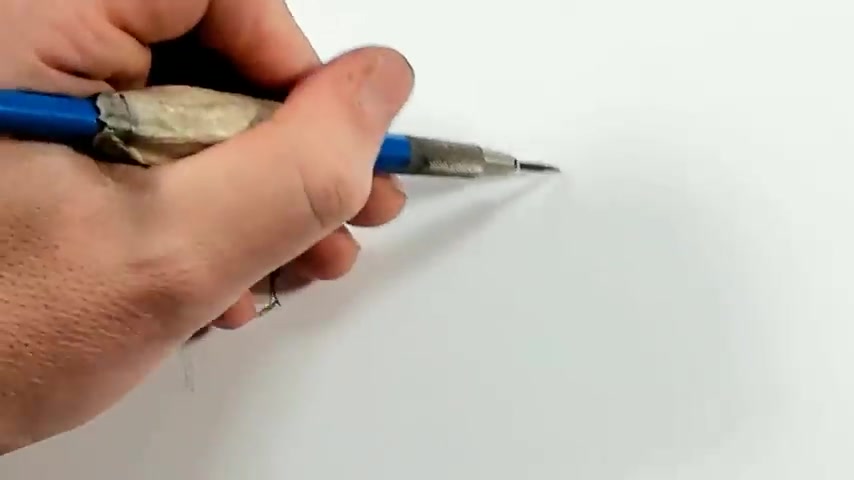
But in really , really simple terms , this is a nose and this is how it's gonna project out from the side of the face .
I'm gonna draw a three quarter angle , here's my chin neck up from my ear , there's a line from my brow line from my forehead , nose and chin and knee should all be even .
So I'm gonna draw in an eye socket here , another eye socket here and cheeks .
This is my mouth here .
My chin is gonna be just about there .
And I really like to draw what is effectively a simplified skull or uh my for my head under drawing and my nose is gonna sit right in this area , but we want to make sure to receded it from the top .
And so I'm gonna start with a bit of a shape like this between the eyes and this is pointed downward .
And then my nose actually starts here and just to draw it as a really , really simple shape .
And we'll work on this in just a minute .
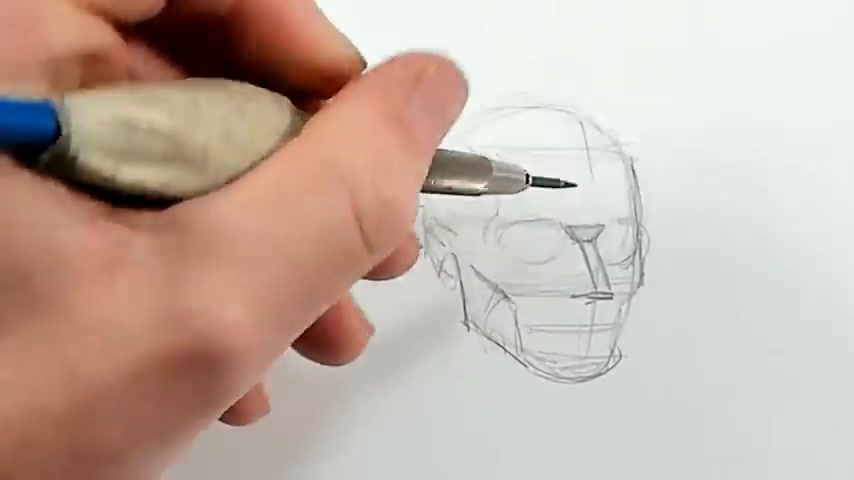
There's gonna be my nose from a three quarter angle .
I can see one side of my nose .
This will be the side of my nose here and the other side is invisible because we're looking at this at three quarters .
So my eyes line up again with where my nose projects out from the top and directly from the front .
So here's basically ahead sketch in my ball , then put a line in for my brow , a line in for my forehead , my nose here , my chin here , this is my center line , make sure that those are about evenly sized on either side , come in from my chin here my ears line up between my nose and my brow draw in my eye socket shapes just like this .
And I've got this shape again here , this points downward .
That's even with my eyes here .
And this is a very simple , crude kind of a drawing for this .
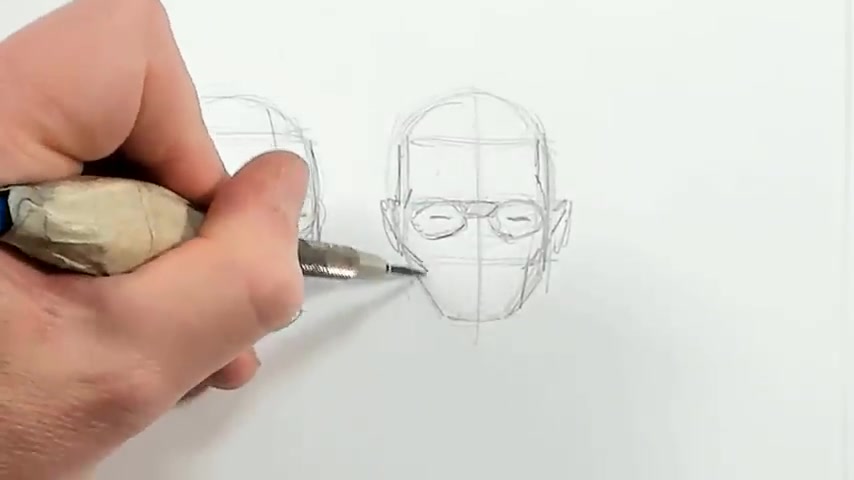
But it's most important when you're drawing uh noses and really any feature of the face that they work in conjunction with the anatomy of the rest of the face .
And that's why I'm really going ahead and just quickly sketching in the rest of my face .
So my jaw starts here just about the level of my mouth , which is gonna be there , cheeks are here or my cheekbones .
And so I want my nose to sit right here .
This is gonna be the bottom of the nose here .
So I'm gonna just draw a simple flat plane here .
We're not gonna see the bottom of it .
Obviously , we'll get a little bit more complex and then this will be the nose from the front and this is really simplified , but it just gives you an idea of how it places on the face .
And so if I was to look up at a face and let's draw a face that we're looking up at .
Here's my brow , my nose will be here , my chin here , my forehead here , I'm gonna come around the side for where I want my ear placed here .

I'm gonna take my line from my jaw here and just draw it across even with these to make sure that I get this other side here .
And there's a very simplified head that we're looking up at .
Let me lighten that down , draw in my eye sockets .
And I , I find having eye sockets in is a very , very helpful thing for drawing the nose .
So I know my eyes are gonna be basically here and here and my nose is gonna start right there and I've got this plane downward here and the base of my nose is here .
And so I want to project up from here and you can actually see the bottom of the nose here .
And so that's a very , very simple drawing of the nose looking up at it .
It's really not incredibly useful for what we're gonna do in just a minute .
But just to give you an idea of how simple you can make that shape and make it fit on the face .
So we're gonna move on from that and we're gonna start actually looking at some of the structure of the nose .
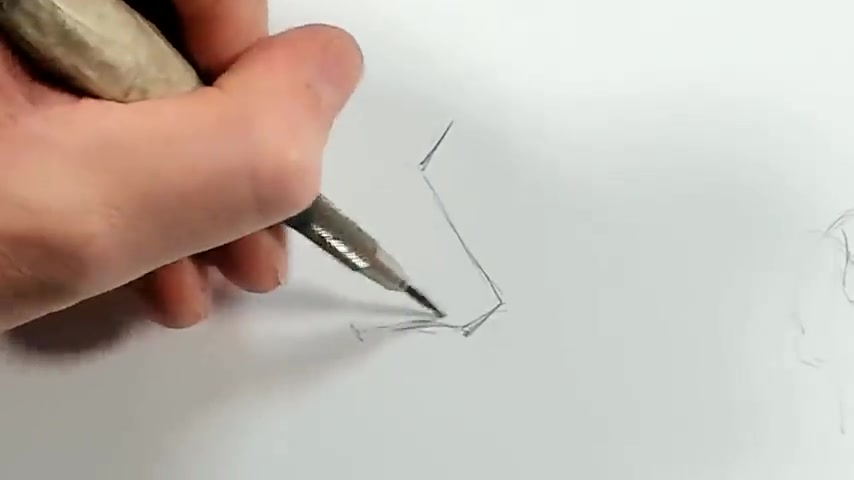
So I'm gonna start drawing the nose from the side .
Here's my eye socket here .
My eye is gonna be just about here .
And so my nose is gonna start at the level of my eye , let's lighten this down and actually break down some of the form .
And so we're gonna come out here .
A lot of people have a little bit of a bump here .
And that is actually where your skeleton sits under the nose here .
And the rest of this is all cartilage .
I'm gonna erase that just for clarity .
And then at the tip of the nose , there's a bit of a ball structure like this that hooks up under and then attaching to that is a nostril that also hooks up under and that has some form just like this .
There's a ridge here and then the side plain of the nose here and from the front , I'm gonna draw a center line .
I've got a ball structure here that I'm gonna shape just like this .
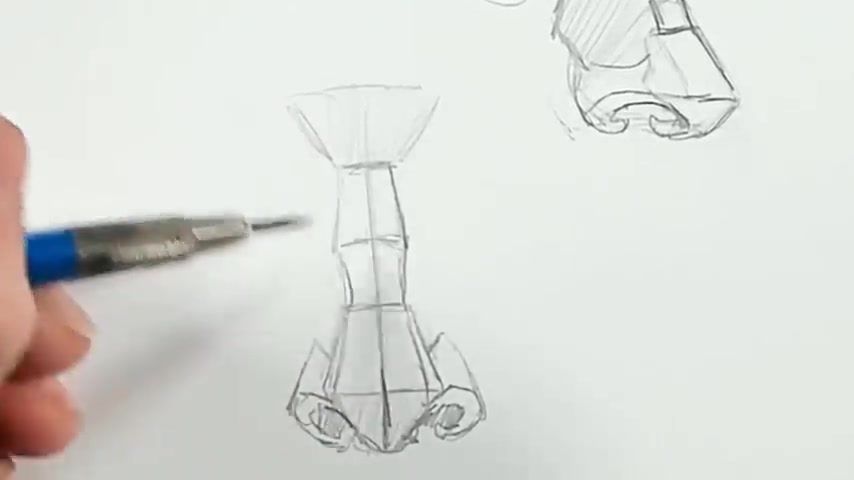
And then I've got this origin point for my nose here and above it , I've got this plane that points downward , this also points downward and this will be where my skeleton , my skull actually ends and it turns to cartilage .
And so I bump out here just a little bit right at that point .
And then my nostrils connect here like wings .
I'm gonna draw another one here and this part here divides all the way down .
There's actually a real division down the center of the nose , which you can see on some people and some people you really can't see quite as much .
And then the sides of the nose here and I find where people really start to struggle with noses is when you start looking up and down at noses .
So I'm gonna take the same form .
I'm gonna look down at my face here , let's tilt this nose downward .
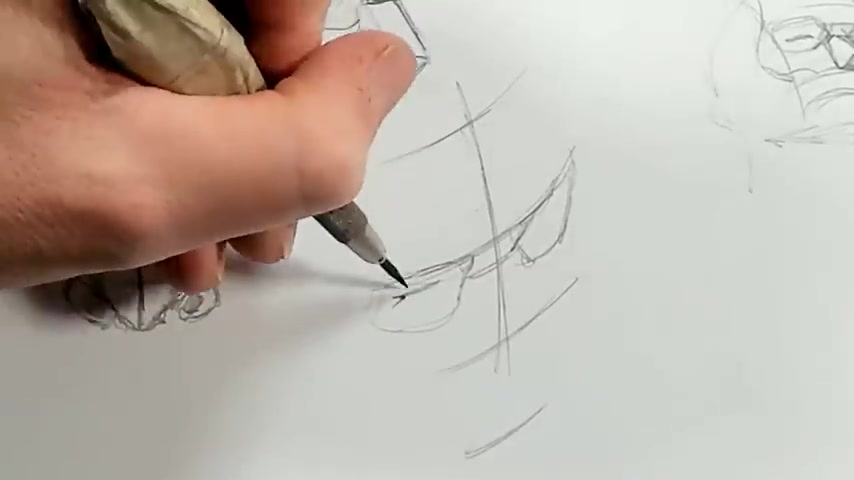
And so here is my eyebrow line , my forehead , my nose and my chin here .
And I'm gonna draw some shapes for my eye sockets .
And so I'd have an eye here into the page , an eye here and my nose is gonna start right along level with my eyes and then project out the base of my nose is gonna connect here , but it's actually gonna come out from there like this .
And obviously , that's very , very simplified .
But you can see that as long as you know , where your nose line is and your chin line , you can actually use that to project it out like a very simple form .
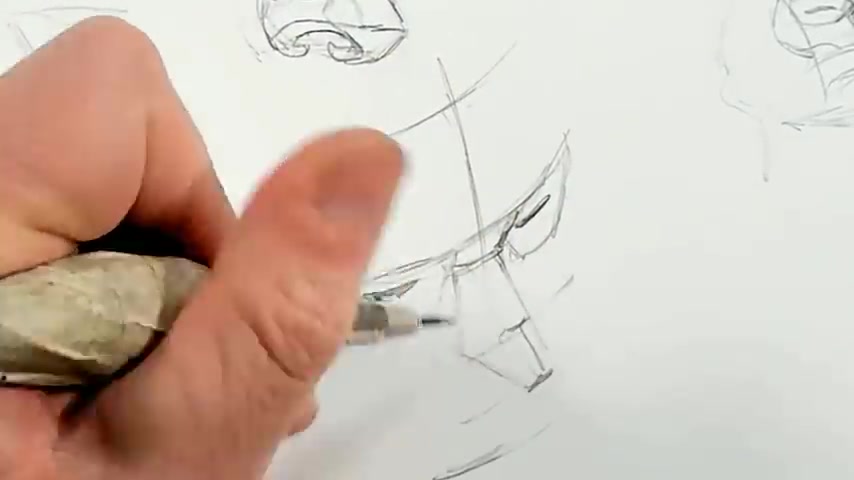
So to finish that , I'm gonna draw the tip of my nose here and then the bridge here and I think we'll see just a little bit of the other side of the that was here and that's gonna connect like this and that's gonna give us a nose that works from that angle .
This is pointed downward here and looking up at the nose , I'm just gonna look at it directly from the bottom .
I have my ball shape from the bottom is shaped basically like this .
And there's a center division in here .
So that's gonna be the shape that you're dealing with for the tip of your nose .
And you can see that your nostrils really just complete off of that .
So it makes it very easy to get your nostrils in and a proper nose shape without losing form , which is something that is bound to happen .
If you just draw a nose like this and then just draw two nostrils in here , you'll end up with something that I see very commonly that is very , very formless .

So you really want to start again just with your simple center shape that has a division down the center and then your nostrils attach into that and it makes drawing a nose from the bottom very , very easy .
And so taking this shape here , I'm gonna draw a face that we're looking up at here .
A bit of an angle .
I generally like to go with a bit of an angle because if I don't , I'll end up with just this right here and it's not really as descriptive .
So here is gonna be my brow .
Here is the line for my nose , the line for my chin and the line for my forehead .
Then these back give me my ear right in here .
My cheeks are gonna be here in here , gonna come in just about like this and my jaw .
At what level with my mouth , you're not really gonna see it on that side , on that side , you'll see it connecting right about there .

So that's gonna be my form and you should see a little bit of uh underside to your jaw .
I'm gonna go ahead and draw in my eye sockets .
I think they make the nose and the eyes much easier to draw .
My eyes are gonna be here and here and my nose lines up here and is the base of my nose is here and I want to project it out from the face .
So it's gonna come out just about like this .
So that's the really simple form that I'm gonna use to place my nose and I'm gonna draw the ball at the end of my nose .
I'm gonna see some of the top of it .

So it's gonna wrap just like this and then come under like this and my nostrils are gonna connect my other nostril , gonna connect just like that and the bridge of my nose is going to connect in just like this and the rest of my face , it's into the same perspective , but you can see how it makes it very easy to place your nose if you're thinking about it in terms of really , really simple shapes to get that placement and then just adding your relatively simple anatomy .
What we're doing here for this noses are actually relatively easy to draw .
Most people when they have trouble with noses have trouble in two areas .
The first one is getting noses for shortened on the face at odd angles .
The second one is how to light a nose effectively and how to describe it with simple lines without getting overly detailed or making it look kind of fake on the page .
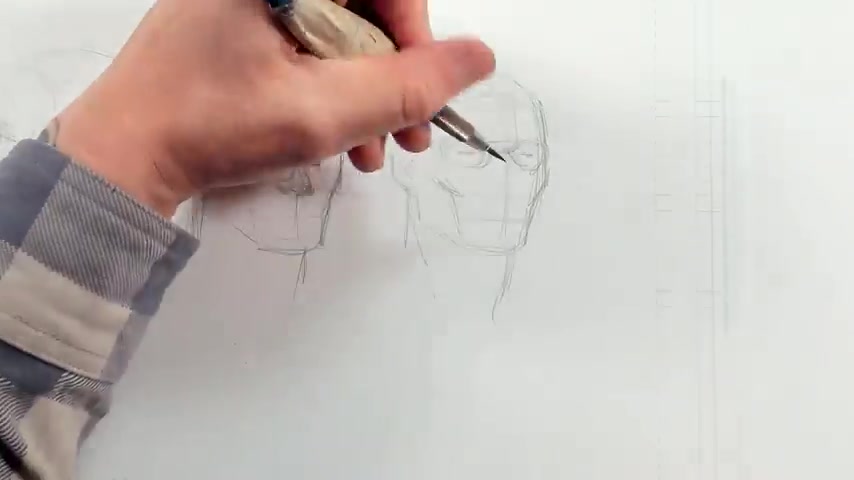
And for me , this is really where this video is gonna start because the biggest challenge in drawing noses is drawing them effectively just using line and and simplifying lighting and making it work .
So I've got three faces I've already drawn in simple structure for two of my noses .
And I'm gonna draw this third nose really much more the way that I actually would because I think it might be kind of helpful to see .
I don't really draw this structure in quite this way .
When I'm drawing , this is more the way that I would do it .
I know that the base of my nose is going to be about here .
I want to come up , I'm drawing this side of this ball of the ball here .
Now , I'm gonna draw the nostril coming out of here .
I'm gonna draw the top of the ball here and then it just extend it to the nostril .
I can see a little bit of the nostril there and that's really more how I would do it , but it's not really the most descriptive in terms of planes .
So I've got the front playing here .
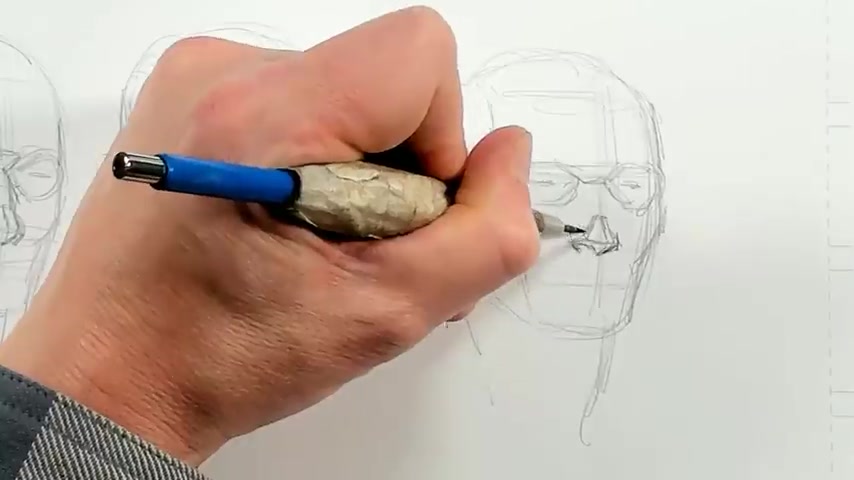
It ducks under here and then the side of the ball of my nose and then I've got the bridge of my nose and that's this connection here .
But I thought it might be a little more instructive to see how I would actually approach it as opposed to drawing something that's really more form based .
And now that we have this , I'm gonna light this nose from a few different directions and we're gonna look at how we can simplify lighting and get something that works in an illustrated style .
So the first thing I'm gonna do is lighten these down because I've got all that form in there and that's great , but I don't want it to interfere with the final drawing for the first example .
I'm gonna light it from this direction here .
And so I want to draw the ridge of my nose here , got a bit of a bump out here .
I don't want to get too carried away with that .
I've got the side of my , the ball of my nose here .
My other nostril is visible just a little bit here and then I can see under here .
I've got this nostril here and then I'm gonna draw just a little bit of this .
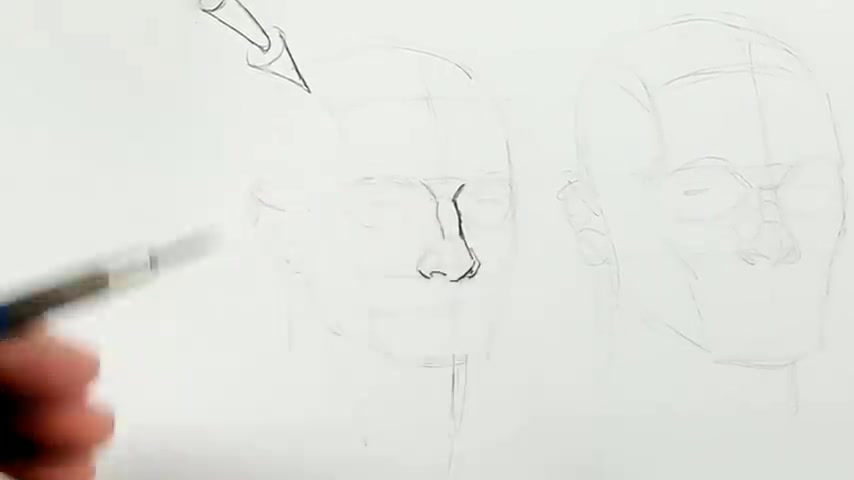
I don't want to go all the way up into here because this is really gonna be where my light is .
And I would have the same problem if I draw this side of the nose here , instantly , it ends up looking very phony and that's a very common problem to have .
So you really want to only draw the side of your form away from the light .
And so now I know that I have a form that turns under here .
So I'm gonna go ahead and just darken that and I'm gonna come up over here .
Now , my nostril really could be darkened all the way through to here and just , I could just make that completely dark , but I find that can be very impressive looking and it starts to get too dark for what we want .
So , what I'm gonna do is I'm gonna draw in the shadow from my nostril .
I'm gonna connect this just up underneath here .
I'm gonna go a little thicker there and just leave that open and that will give you the lighting that you're looking for , but it prevents the lighting from encroaching too far into your face .
A similar problem can happen with lighting your eyes .
So I've got an eyebrow here .

I've got my eye here and strictly speaking , based on this lighting , this is a plane that points downward and I can go completely dark there , but I don't like to do that because it completely blots out the eyes .
So what I tend to do is just cheat that a little bit .
So while I have this plane lit , I'm not going quite as dark here and I'll give it just a little bit of lighting under the eye here just for that , the fold under the eye .
And now I also have the problem of this plane here which is dark , it turns under and I could make that completely dark , but again , it really can start to conflict with the face .
I don't want to do that .
So I'm gonna leave that out .
I'm gonna darken through here and just leave a little bit of hit of light .
I think I'll dark on that too , just right here .
And now I'm gonna draw my cash shadow and so my cash shadow from my nose , it's gonna extend out just like this .

I can give it just a little bit of a bump out there because it actually has that kind of a form and then below the nose , you've got your upper lip and I wanted to find that in there too .
And now again , this is a choice I could make , I could decide to light all the way from here .
I'm gonna leave that open underneath the nostril .
I don't want to close that in and that's gonna work pretty well to get me what I'm looking for here .
Maybe I can come up in here and doing this is just really some people have a more defined center line between these two bits of cartilage and the tip of the nose .
And so I'm just defining that and that's a choice .
It's not something you need to do , but something that you certainly can do .
I'm gonna shadow out here into this eye and all of your shadows really interconnect .
So it gets very difficult for me to just put in a nose and not start to relate that to the other areas of the face .
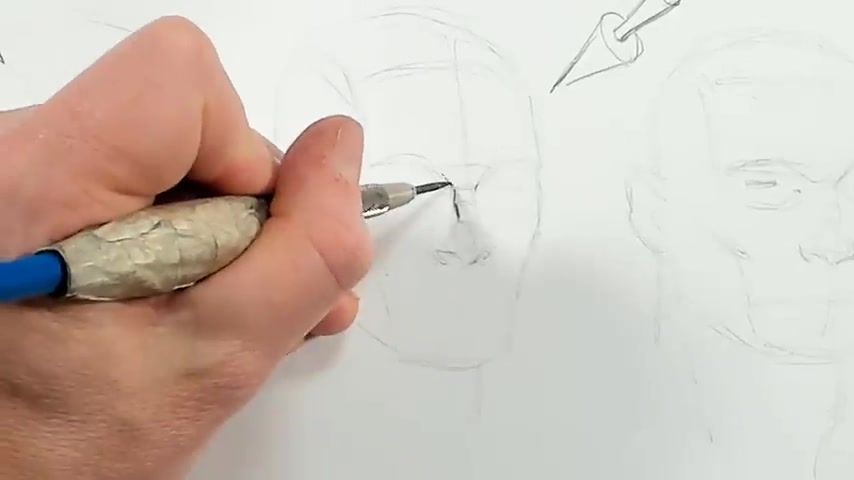
There's a nose lit from a , a three quarter angle , you can see that I'm cheating just a little bit and drawing a shadow heavily under the nose but not shadowing too heavily under the eyebrow .
I could actually go quite a bit heavier here and it doesn't really interfere as badly because I can see that eye and that can really work .
So now for our next nose , I'm gonna go ahead and light it this direction right here .
And so I can see my nose , I can see all the , I can see all of my under form there .
But what I wanna do is define this side of the nose now and I want to avoid being dark on this side .
This is far more common when lighting is coming to the near side of the face .
It's very common to see someone define this side of the nose and then try to light it and you end up with something that looks very phony .
So what you wanna do is just completely eliminate that line and we will entirely focus on this side of the nose .
And so I'm gonna go ahead and darken underneath here again , underneath the ball of my nose .
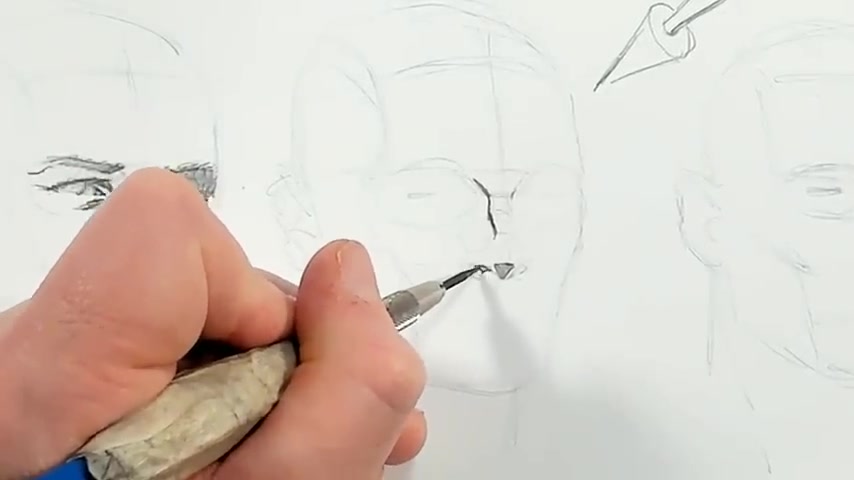
I'm gonna darken my nostril which I know will be dark .
I'm gonna darken this nostril just a little bit and catch that hit .
I'm doing the same thing that I did here .
Maybe I'll give it a little bit of a , a bump up there .
I'm gonna catch a little bit of light here and I wanna come out for the ball of my nose here .
And now for this nostril , this is where things can get a little bit touchy .
I can just go completely dark here and blot that whole thing out , but that's really not what I wanna do .
What I wanna do is defined in that shape .
There's my nostril here , so this is gonna be dark in here above it , but I'm gonna be able to see this and I think I'll start to define where that line is here and still leave it fairly open .
So I can see that nostril .

But these are choices that you really learn through looking at other artists that do it effectively without destroying the underlying forms and without obliterating things with too much shadow , you can see I even left a little bit of a hit of the light underneath that nostril and I'm gonna leave that we'll see if that'll work or not .
Uh And it really keeps things very , very readable .
I've got these shapes to find here just above my lip .
Look this just a little bit over under that nostril and then this will be dark here going into this brow .
I got my eye here .
Nice and simple with this and I don't want to completely go dark here .
So I'm gonna try and leave just a little bit of light here .
A little bit of a bump out there and I feel like my nose has maybe a little more shape than I'd like it to have .
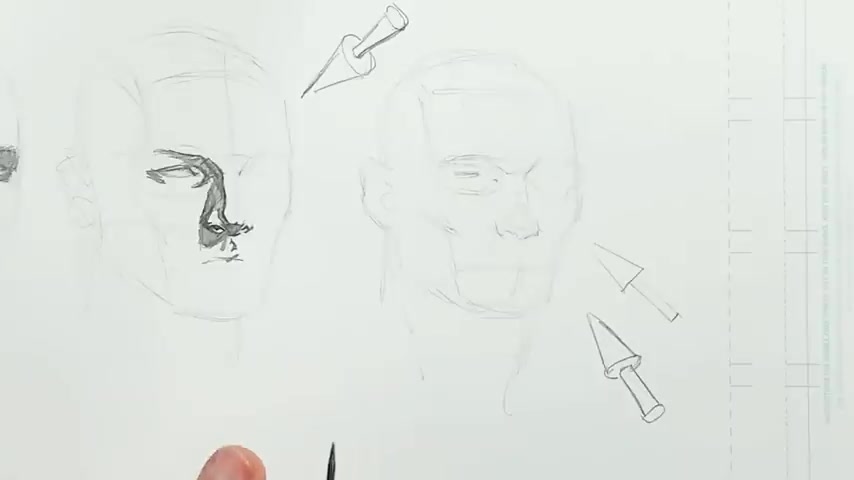
I'm gonna bring this in just a little bit and erase back , make this just a little bit more straight and this can shadow pretty heavily into the eye socket here and there's gonna be the shadow for my nose and let's just darken that in .
So there we go .
Now , for this last nose , what I'm gonna do is I'm gonna light it from this direction here .
And I want you to notice that I'm drawing all these arrows as three dimensional shapes because it's very important that my lighting is actually pointing toward the face .
Because if I light it directly flat , then you get a lot more shadow on the face and things become much more extreme , which is what not what we're doing here .
So we're really going with a three quarter light where we can see more of the face .
And so for this one here , I've got this shape here and I've got the top of my nostril .
And with that lighting , I really want to accentuate that the top of my nostril will be dark .
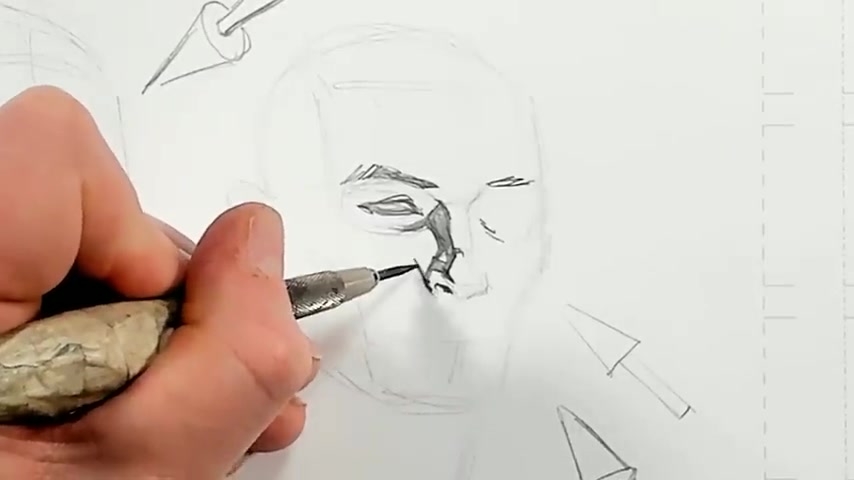
My actual nostril itself will be dark .
I'm gonna make it a little bit larger here than here because it's gonna pick up a little bit of light in here .
Bring this under here just a little bit , maybe , bring that over so you can see the top of the , the ball of the nose .
And then I'm gonna have a shadow just along here away from the light in here .
It's gonna stop here because this will actually start to catch some light .
And then I'm gonna run along the ridge .
This is my eye socket and this is why it's so nice to be defining things using uh let me draw my eye in here .
It's so nice to be defining things using , using eye sockets because I can use that as a basis for my lighting and I , I could leave it like this or I can actually cast my shadow upward from the nose like this and go just a little bit deeper with it .
That's really allowing the nose to cast a shadow up .
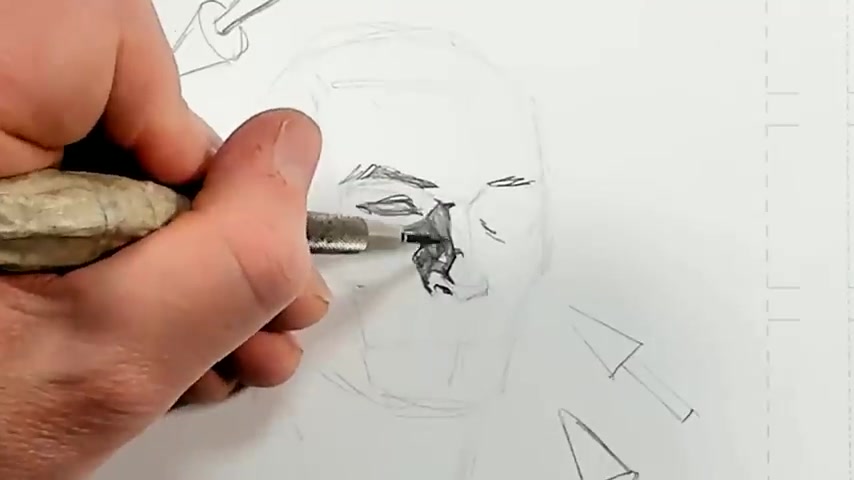
I can come here and start to draw a little bit of a bit of that ridge here .
I wanted a little bit of the hook here .
I can see just a little bit of the division between my cartilage here .
I'm just gonna define that and then define in my other nostril here and then kind of come around .
Now , I'm coming into the light here .
So I want to be very careful to not get too carried away .
And now this starts to actually come away from the light which is coming from here .
So I can give it a little bit of a hit or shadow here too .
If I want it will work and we'll see , and there we go .
I felt like I was coming up a little bit too high for that cartilage .
I wanted a shadow part of it here .
And so I brought that down , let me clean this up and I wanted to bring this down a little bit too because I was defining that plane change too high and there's gonna be a nose lit from below and now we're gonna move on to what I think is really the most useful way you can learn to draw noses .
We have four of my favorite artists here .
This is Alan Davis .
I've got Mike Vignola , I've had this book for a while , part of it somewhere else .
I don't know .
I need to give another copy .
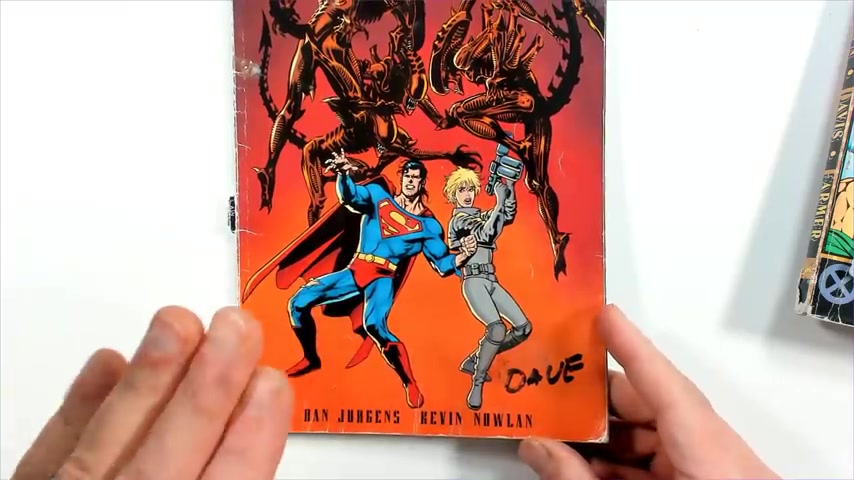
This is Greg Capo and finally , we have Kevin Nolan .
This book is so that it has my name on it from the old studio .
I used to work at where we all used to steal each other's books .
I've got a few with other people and Dave's on them so I can't complain .
All right , I'm gonna go ahead and start with Alan Davis .
Here's a great example of a nose that's being lit around the front , very similar to what I did in my second drawing , lighting noses .
And so I'm gonna draw this face essentially .
And I want to tell you that I debated very heavily in showing other artists to use as reference in order to be able to do this because I know a lot of people really encourage drawing from life and I really encourage that too .
But the fact is for cartooning , drawing from life and finding lighting , that's that succinct and simple and broken down is very , very difficult and , and learning to draw for you will be much more streamlined if you take in the knowledge and experience of countless phenomenal artists that have come before .
And so I'm gonna draw in my basic nose structure .
I know the base of my nose is gonna be about here just like this and there's gonna be my basic nose structure .
The mouth is gonna be just about here .
We're not gonna draw the mouth , it's gonna be about eye level .
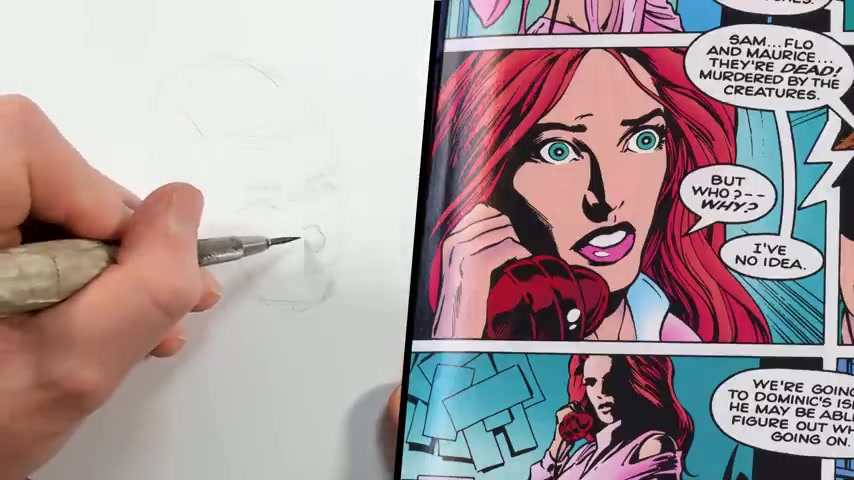
So let's make sure that's lined up there and lighten this down .
And I know that I have a ball at the end of my nose .
I'm not gonna do this for every picture , but I want to actually make sure that we have the anatomy basically established for this one here .
And I've got my nostril attached to that .
My other nostril is gonna be just about here .
You can only see a little bit of it from this angle and there's my basic nose .
And so what I'm gonna do is lighten this down again and I'm gonna go ahead and just try the lighting that Alan Davis has done here .
And so he's coming along the side of the ball of the nose here and he's creating a shadow here .
He's got a shadow along here that terminates at the nostril that I've got drawn here and then he's drawing the nostril in here .
He's actually got it darkened all the way through the nostril and then the shadow cast from the nostril here .
It's got a bit of a shadow under the nose here .
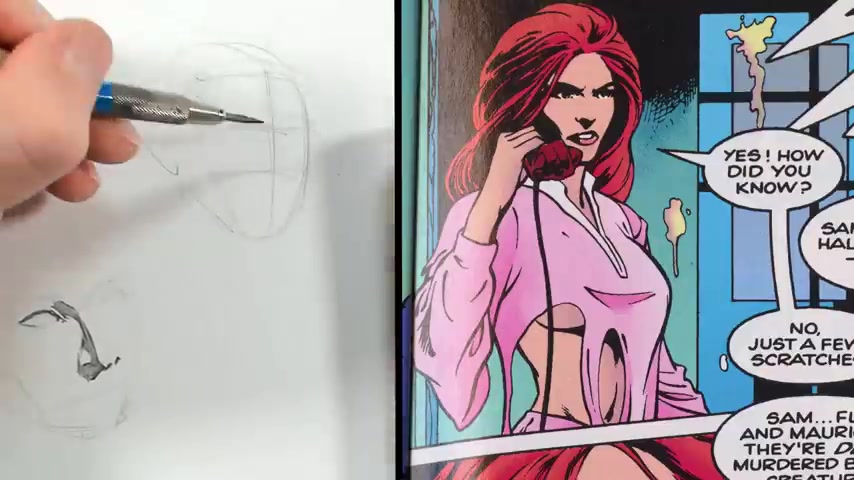
You can see that's actually that line kind of defines the center line of the nose and then you can see just a little bit of this nostril defined here and then a shadow cast out through here .
There's my simplified version of Alan Davis's lighting on this nose and it's not perfect , but I'm really not worried about getting this to be absolutely perfect .
Alan davis' nose .
This is really a study .
So there's , there's my nose and that's really all the definition he has for this .
You can see that he has no detail whatsoever on the side of the nose .
It's just completely knocked out .
I should really be calling this how to swipe noses the video .
So here's my face .
I don't need this to be fully realized because we're really just working on the nose .
I'm gonna draw an eye socket here , an eye socket here , the eyes are here and here we're not gonna worry about the lighting on the eyes for now , but I think he did it in a really interesting way .
My nose is gonna start here .
It's gonna project out to just about here and at the line from my nose here and there's gonna be the basic structure .
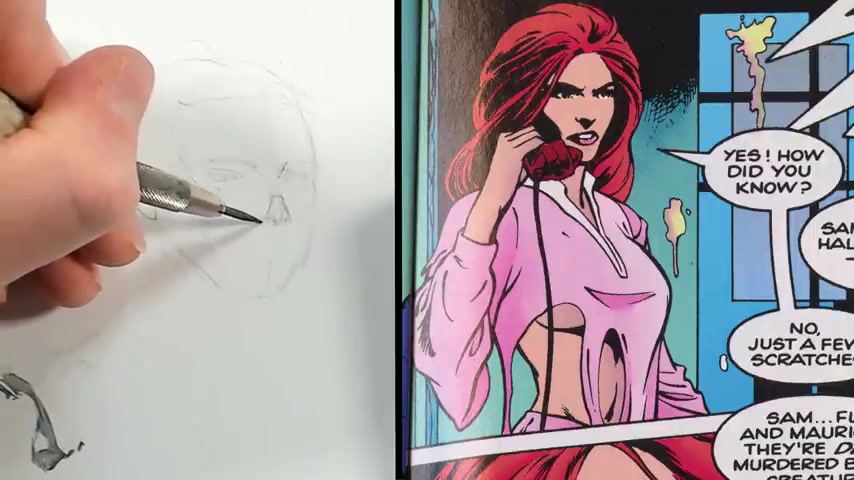
And from here , I'm gonna lighten this down and let's get some of that structure in .
There's the center of my nose , the ball at the end of my nose , here's my nostril that attaches and terminates just about up here and there we go .
And so let me lighten that down again .
And now all he's done is drawn the shadow underneath the nose , the ball of the nose here , he's come up through the nostril here and then he's got a bit of a hit for the back of the nostril there and then just a little bit of a cash shadow downward .
And so he's using form very , very effectively , but also very simply .
And so that's how you can get a really simple shadow shape that works for your nose , but is actually respecting the form underneath it .
And understanding that form makes using this sort of lighting very , very effective and easy .
Next , we're gonna go ahead and take a look at some Mike Vignola .
This is a really great nose .
And so let's start to draw in a shape for our head here .

So here's my basic head shape if I miss a little bit and I'm not perfect , not a problem because I'm just doing this for study .
Here's one eye socket , my other eye socket is gonna sit just like this and my nose is gonna start here .
I've got an eye here , another eye here and the tip of my nose base of it starts here , the tip is gonna extend out because I'm at a , just a bit of an angle .
So here would be the tip of my nose like this .
My nostrils gonna connect in like this and I'm gonna see part of the other nostrils on the other side connecting in just over here .
And so now that I've got that , I'm gonna to lighten this down and I'm gonna start to define it the way that he has .
And he's actually really broken a rule for me .
That is a hard and fast rule and he still makes it work because he's Mike Vignola , but he's really drawn in the shadow on this side of that nose .
It's something that I really don't like to do .
And so I'm gonna try it without it just because it's such a rule of mine .
And so he's got a hard , good shadow here defining .
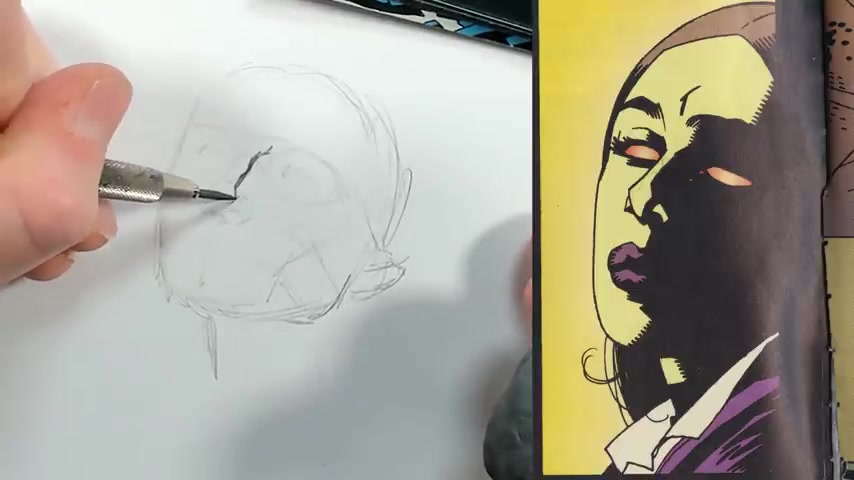
You can see he's got a bit of a bump out very slight here .
Then he comes out for the ball of the nose here wraps down and then he actually kind of wraps up under here and really beautifully defined .
I love how he's defined that shape there .
He's got a bit of a kick out for the nostril here .
I'm gonna draw in just a little bit of that shape there and maybe bring this up here the way he has but not connect all the way through .
And we'll see how we do .
Now , I've got my nostril defined here and then he really went shadowed all the way through which we can do , but we certainly don't need to do .
So I'm just gonna terminate it about here .
I think this is a real artistic choice to make that side of the face dark and it's beautiful and I love how it works .
But for the , the sake of this , I just want this to be just shadowing the nose and he's really gone dark all in here , which is a choice you can make .
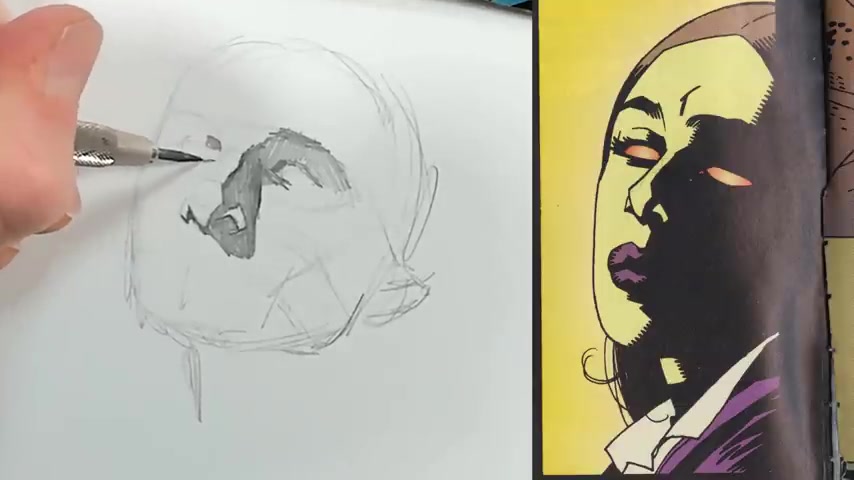
And now instead of drawing in that side of the nose , what I'm gonna do is he's got a bit of a shadow here on the upper lid .
He's got a bit of a shadow on the lower lid and they both connect to where that nose would be there .
I'm just gonna go ahead and leave it like that and see how that works .
And I , I think that's gonna work .
I prefer that really , it needs to be your choice and this is where looking at different artists and trying out different styles and really help you define your own style .
Another thing that Mike mcla does and we're gonna go ahead and look at this nose right here and I think it's really beautiful and it's actually gonna lead us into our next artist and I'm just gonna draw the nose for this one .
I've got the tip of my nose to find just like this .
My nostril is gonna connect into that and it hooks inside there and then the other nostril is really not visible from here .
And if it is , we're not gonna see it because of the shadow anyway .
So we'll just leave it out of there and I'm gonna lighten this down and I wanna show you really how he defines the nose here .
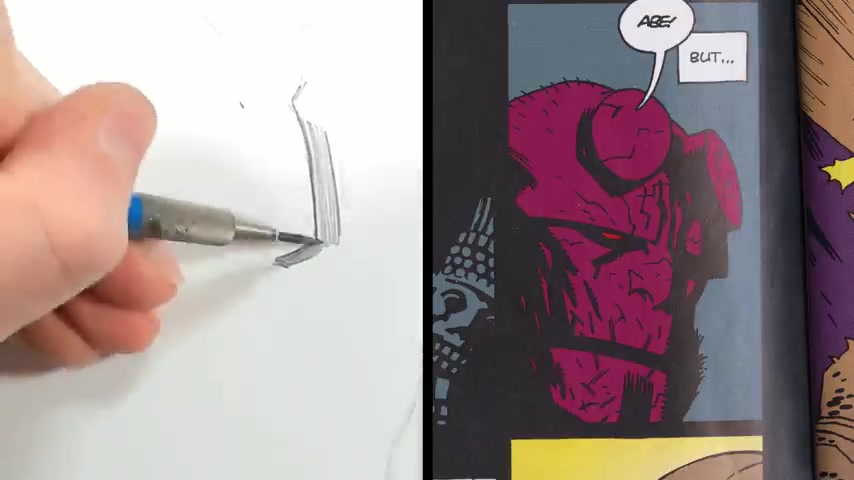
So he's got a , a really bold shape here cut here that he ends just like this pretty good size shadow here , shadowing out the whole eye through here .
So let's just go ahead and darken that whole area and , and then he's coming up here and defining his shadow from the nose like this and for his nostril , he's got it defined here .
It going quicker here and then going all the way to a point , a very illustrated kind of a look gives a , a really hard , interesting kind of a look .
And I really like here , he's got a bit of a , a cut across the nose and he's , he's got a bit of a , a line here which I feel like defines that front ball of the nose a little bit just like this .
And now he's coming in with a hard line here and it's very , very angular and done in an illustrated way .
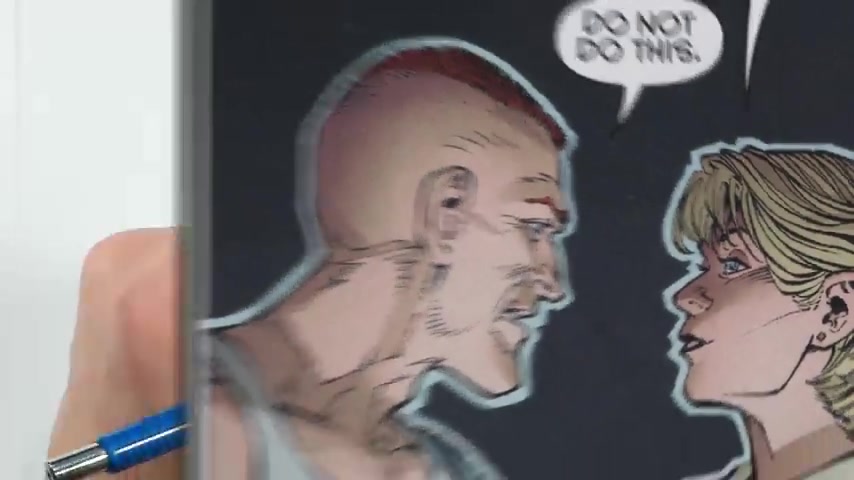
That is really different than he's actually got , he fixed mine here .
It's cartoon in a way that's really different than I would ever approach it .
But it actually comes out that way and then cuts in like this .
But it gives it an interesting kind of a look and you can see how , how drastic you can get with your shapes and still make it work .
If you understand the basic shapes that work underneath , you can even make a design choice like this and , and have it work .
And the last artist I wanna show you is Greg Gulu , who I think draws incredible faces , incredible noses .
And so we're gonna go ahead and look at this page here because he has a real tendency .
Now , I'm gonna start with this face .
So I've got my line for my brow line for my nose line for my jaw draw in my eye socket .
You can see how the nose cuts in right at the level of the eye .
And he's got it coming out pretty high up here before it comes back down and then it connects in at the nose level .
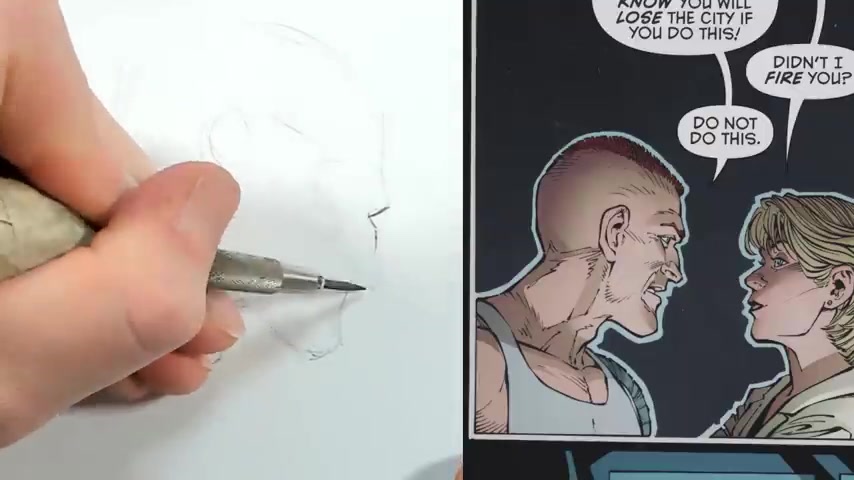
Then he's got his mouth and the chin comes out just a little bit here here .
It's going to be just about here .
And so let me lighten this down .
We're just going to focus in on his nose .
So I'm gonna start here and you can see the ball of his nose he's really defining with this really interesting kind of a shape just like this .
So he's going from the ball at the end of the nose to the nostril and then hooking under and then drawing his nostril in here .
And it's a really interesting definition that I really like .
And I'm not gonna go ahead and draw out the entire face , but we're gonna move on to this nose here .
But let me draw my basic overall head , the nose really always has to work in , in relation to the rest of the face .
And so I find just drawing a nose to be actually incredibly difficult .
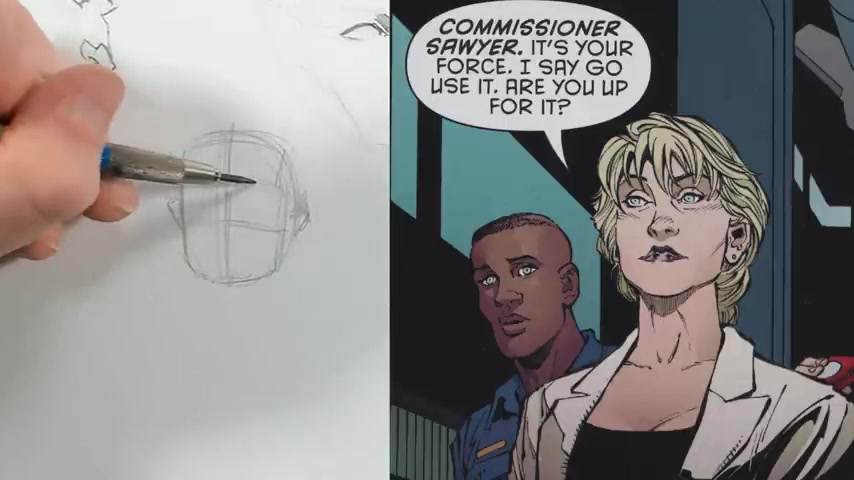
Got an ear here , my other ear is here , my eye sockets , my nose is gonna start here .
It's gonna end just about here .
We're looking up at the face a little bit .
So let me lower those ears down , maybe even a little bit more of the mouth is gonna be just up about here and we're gonna see some of the underside of that nose .
And so what I'm gonna do in really simple terms , there would be the underside of the nose , there would be my ball and there would be the bridge of the nose connecting up in .
So there's my nose defined in really , really simple terms .
Let's erase that and start to use some of the shapes and detail that he's using .
And so he's got the ball of his nose defined just like this just with a simple line and you can see that nostril peeking in there and then the outside of the nostril there , he's defining the top of the ball just with some simple lines which I really like it and it kind of gives it just a bit of a plain change there .
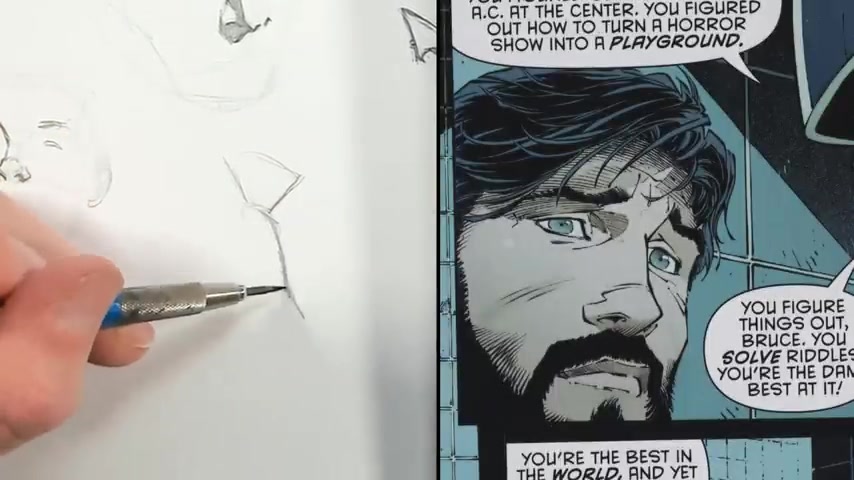
And then my other nostril is gonna be here and you need to remember , of course , that you've got this shape here .
And so that nostril fits in just like this and this is where it's so important to know those basic underlying shapes .
But that's really all he needs to do to get that working .
And now he's got his eyebrows raised or this eyebrow a little raised .
So I'm gonna lift that up a little bit and then my eyes are gonna be just about this level here and that's really all there is to it .
He draws very , very simple noses , but they're incredibly effective .
I wanna show you one more example of , of how he defines his noses .
And you can see here's , here's a nose here .
I've got this shape here .
I've got this shape here .
Then my nose is actually projecting out from it and see there's a bridge of my nose , he's got a bit of a shape to it .
He's going to the ball of his nose here .
That's gonna be a shape just about like this .
The nostril is gonna connect in like this and you can see just a little bit of the other nostril on this side here .

And so that's really the , the shape that we're dealing with .
And I'm just gonna define it the way he defines it .
And this is where looking at other artists can be so incredibly effective versus just looking at life , which I also recommend but just finding simple ways to get across your form without getting lost in , in detail and subtle plane changes that can be incredibly difficult to effectively light without overdo it , be very hard .
And this is where it's such a great thing looking at something like cap that has this so nicely broken down .
And so across the top of his , the ball of his nose , he defines it just with a couple of lines here .
It's kicking out pretty far back here and then defining out his nostril just like this and he's got his other nostril here and the shape here .
And he's also you can see defining that this is dark here just with some simple lines instead of really going in here and defining that as a line .
He's just leaving that out and allowing the colorist to do it .

And he's got it slightly defined just with a little bit of a line above the nostril here makes for a very interesting technique and nicely line weighted .
But overall , it's not overly lit , which is something that's very common with , with Greg Capo's work .
He doesn't generally overshadow his faces unless he wants it for dramatic effect .
So now we're gonna look at my personal favorite nose artist and really a lot of other things , artist .
This is Kevin Nolan and he does absolutely amazing noses and this is really more the blueprint of where my noses come from .
You can see how well defined he has all of his forms and done it in a simple enough way that you can really get a good understanding of it if you understand the underlying forms .
And I'm gonna start with this nose here .
And so I've got my face , let's bring it in here .
I try to make this fairly small .
I'm gonna draw one eye socket here , the other eye socket and this line really , in order to actually fit on the face would have to contour with it .

I just draw it in as a simple line just to get my initial shape established .
So there's my eye sockets and that really starts to define in quite a bit of the nose just like that .
And I'm gonna go ahead and draw in my shape for my nose .
And this is where Greg Capo likes to draw this kind of a shape here just with some lines that really , really works .
And it is something you can make part of your style very quickly and easily .
And so I know the basic shapes that I've got under here .
I'm not gonna draw all of that again .
What I am gonna do is just start to work with some of his shapes .
And so he's got the ball of his nose defined this way and he's not lighting all around that nostril and he's actually got a bit of a , a shadow on the back of the nostril here .
So what that does is actually gives it a light that's really kind of coming from the front .
So it's casting a shadow around both sides just a little bit .
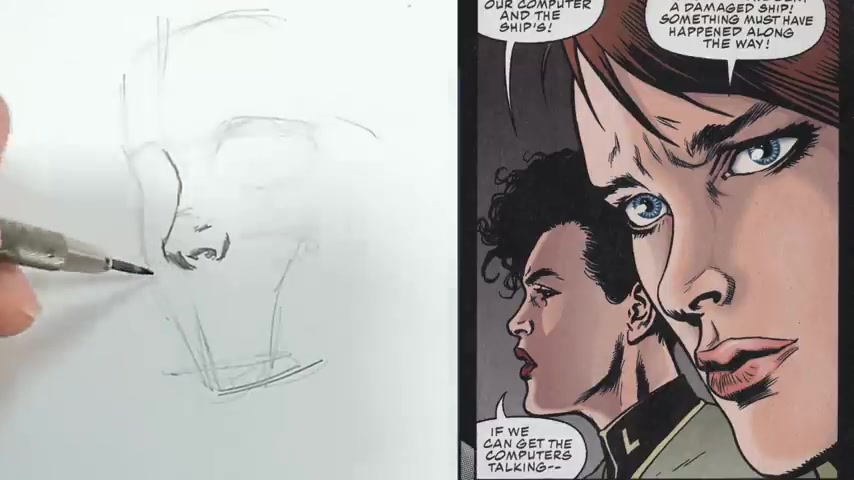
And instead of the way that Greg Capo defined some of his , his lines like this , he's just got a few little lines defining the nose right here , got a bit of a shadow in here and then he's got his upper lip area right there .
Next , let's try this nose right here .
So there's my basic head lighten that down and we'll actually start to draw the nose here using all of the forms that we already should know pretty well by now .
It's connecting to .
This is my nose line .
A is gonna sit right in here .
Now .
He's got it lit really from below here .
And again , he's got hit the edge of his nose defined and I'm gonna try and do this without doing that because really it's a rule that I like to stick to .
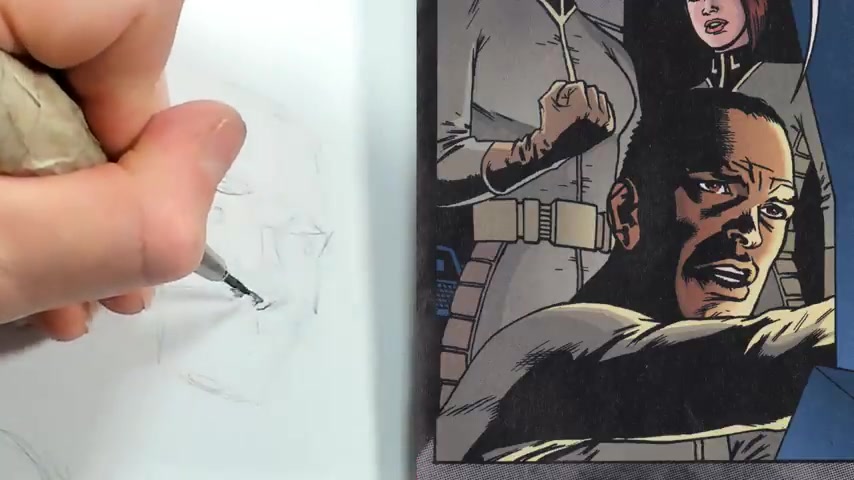
We'll see if it works and if it doesn't , we'll put that line in and sometimes trying , this can give you a real sense of , of what works and what doesn't and why artists have made the choices that they've made .
And so you can see here , he's got this tucking under and he's got the center of his nose defined here just a little bit .
He's got the ball of his nose defined with this line here and then coming up over the nostril and coming in here where the bridge of the nose starts to connect into the ball of the nose at the end here .
And he's got a pretty good light , a pretty good shadow here .
And then he's really kind of cut it off here to give it a lot of uh give it a really good ridge here .
I'm gonna try that .
It's very different than what I would do .
I feel like for me making a complete break , there is not gonna work .
I'm not gonna do it .
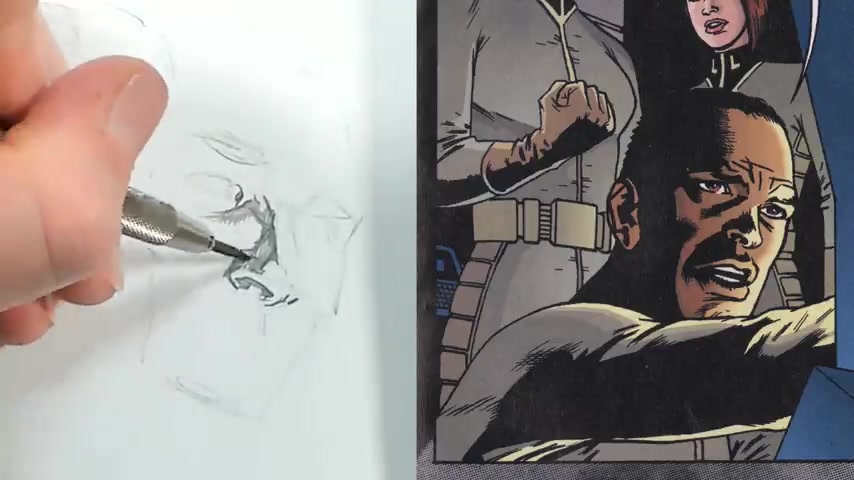
And I think that works just a little bit better for me , but that's a choice .
And really the way that I've drawn some of the shadow in here is also based on some other drawings that he's done .
So it's , it's not like I'm making that choice out of nothing .
I made that choice out of knowledge that I have gotten from other artists and especially from Kevin Nolan , just from his body of work .
And he's got his , his upper lip heavily shadowed here connecting kind of into that nose just a little bit because this whole area is turning away from the light because it really connects into the nose shadow shape .
I'm gonna draw it in there .
Now , I'm just gonna go ahead and fix a few things where I think I've kind of come off .
I think I went just a little bit too far with that nostril and I lost some of the odor edge of that nostril .
And so there it is with that , the other edge , I'm gonna go ahead and define some of that in and see how I like it .
It is so different than how I would normally do it , but it works .
And for the last example , let's draw this nose here .
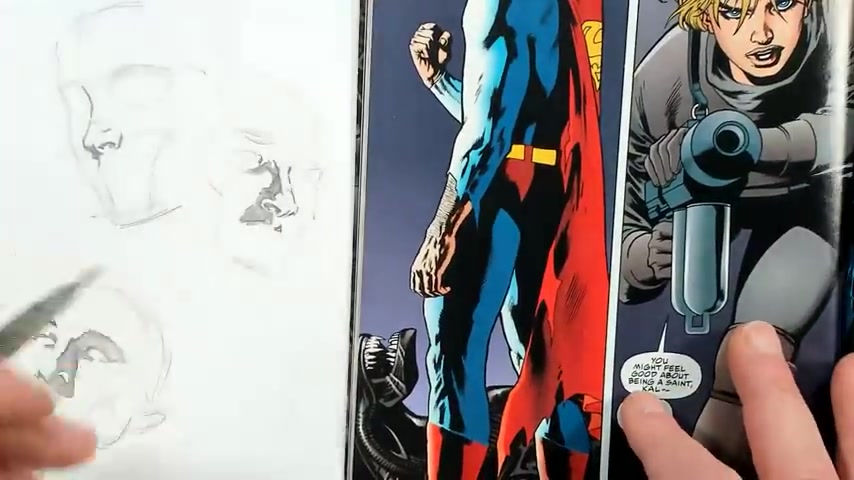
We're actually looking down at this nose , but you can still see the nostrils which may be a bit of a cheat from that angle .
It's got another angle here where you actually really can't see the nostrils and that might be just a little bit more accurate .
But I think that this really works .
And so we're gonna give it a shot .
So I've got my face basically drawn in here and we just need to get the nose in .
And so I know my nose starts at my eye level .
This is my nose line .
I want to project downward from here just a little bit because we're looking down at it , got my center here .
So my ball here and then we're gonna come up for our nostrils which are gonna connect in like this .
And so he's defining his nostrils just like this .
You can see a bit of the , the hook in here but very flattened out her nostril .
He's really drawn in quite a bit and then a bit of rendering here to update this face just a bit on that side .
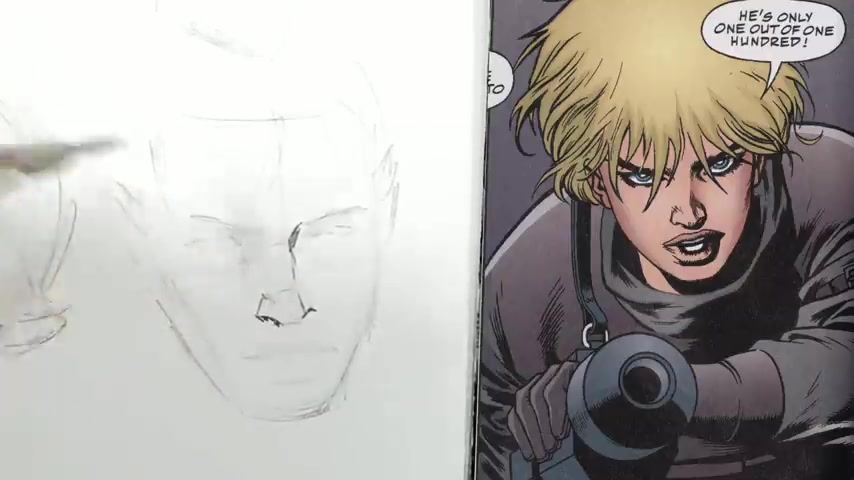
It's got side of his nose to find here .
The ball , the , the turn of the ball of the nose is , is really lowered this .
So you only see just a bit of it .
He's got a bit of definition down the center here and then you can see he's left just a little kick light under this nostril .
He's got a bit of a shadow here comes up here connects in just like this and this shadow too through here .
And that's really it , it's a very simple nose and this would be incredibly difficult for you to draw based on absolutely nothing or really photo reference , which can start to make things very confusing to really see your planes .
And this is why looking at artists that do it so well , like Kevin Nolan or really , whichever artist you choose is such a great learning tool .
And I really recommend you that you do it right .
That's gonna be it for this one .
Thank you again so much for watching .
Be sure to tune in every Monday night at eight o'clock Eastern for Monday night Draw and check the link in the description for our Monday Night draw .
Season one sketchbook .
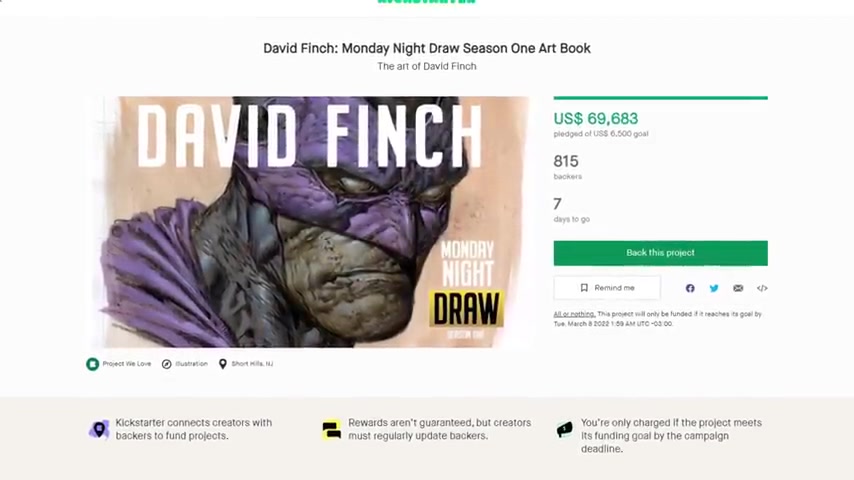
It's live on Kickstarter right now , your support really means a lot .
I will see you in the next video .
Are you looking for a way to reach a wider audience and get more views on your videos?
Our innovative video to text transcribing service can help you do just that.
We provide accurate transcriptions of your videos along with visual content that will help you attract new viewers and keep them engaged. Plus, our data analytics and ad campaign tools can help you monetize your content and maximize your revenue.
Let's partner up and take your video content to the next level!
Contact us today to learn more.